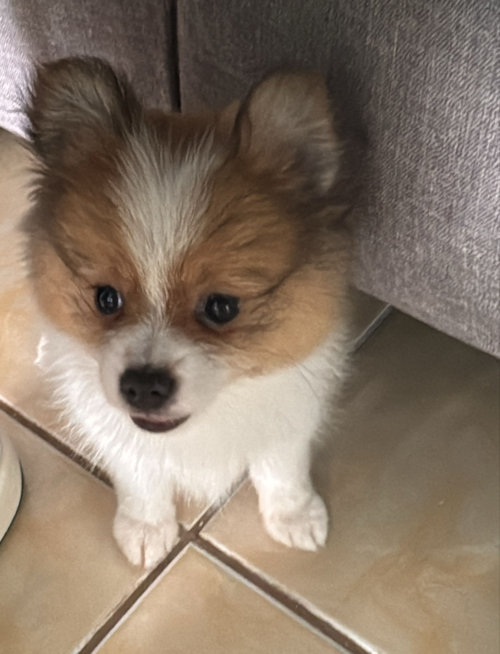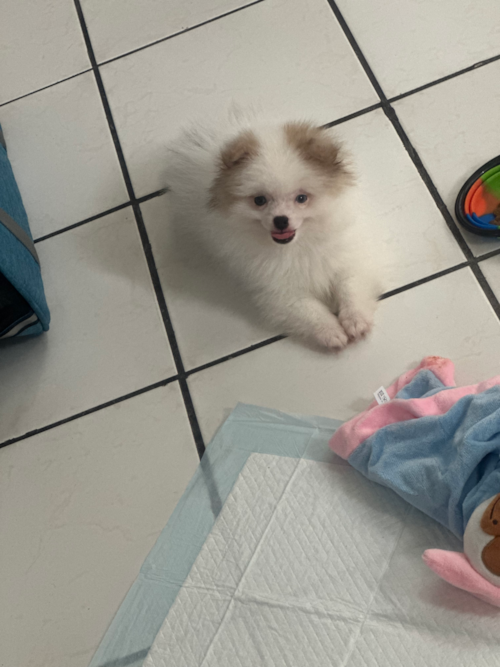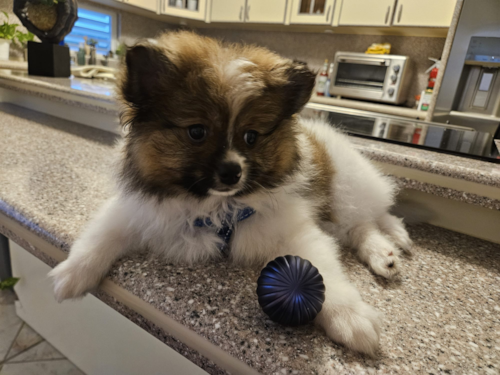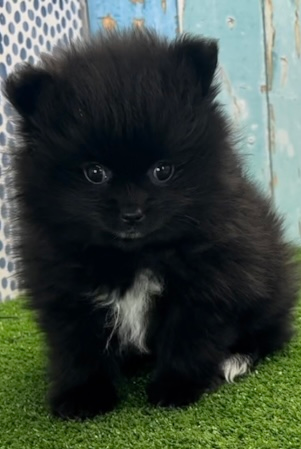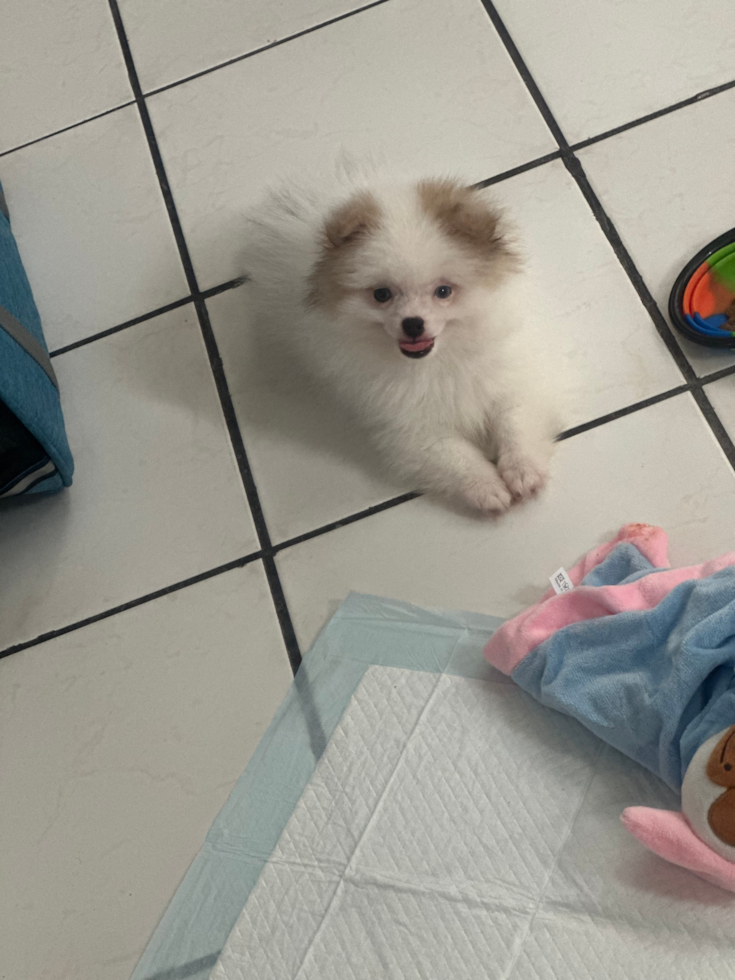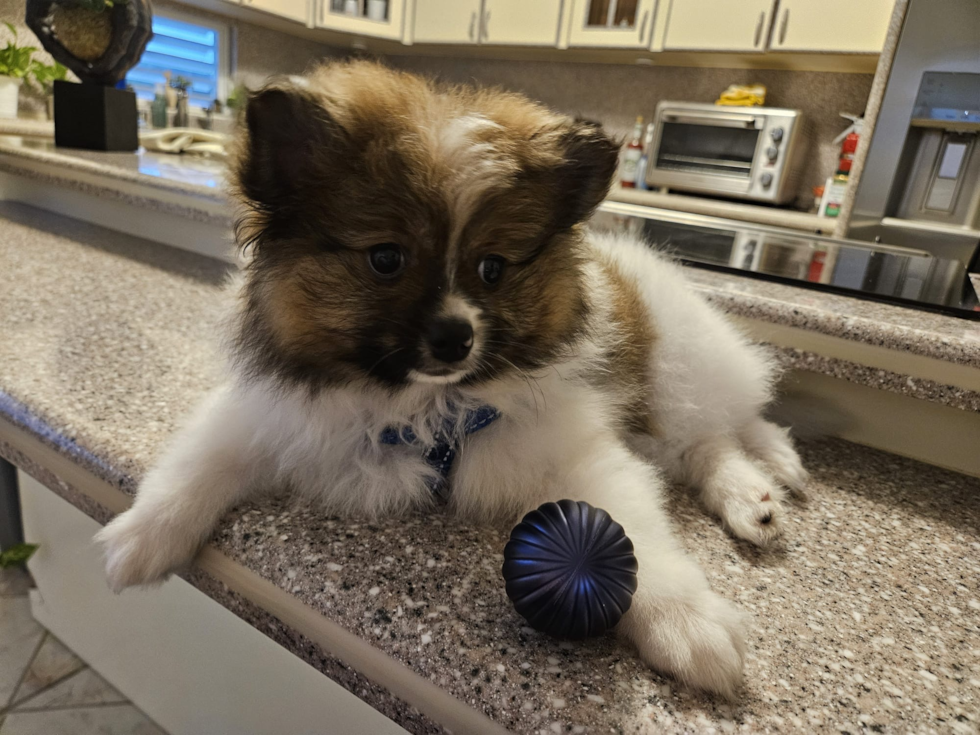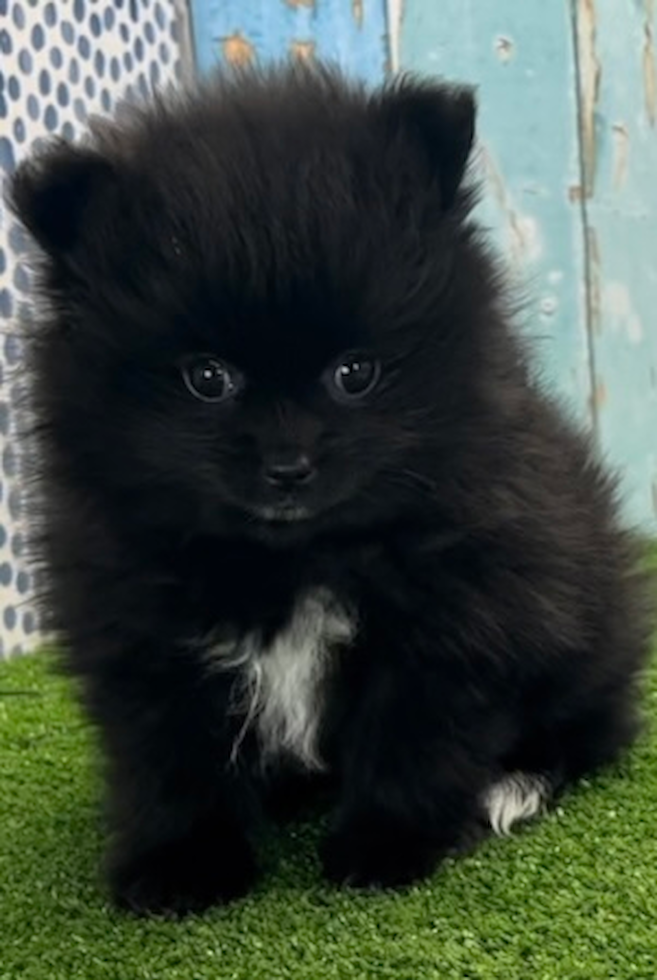Pomeranian Breed Information
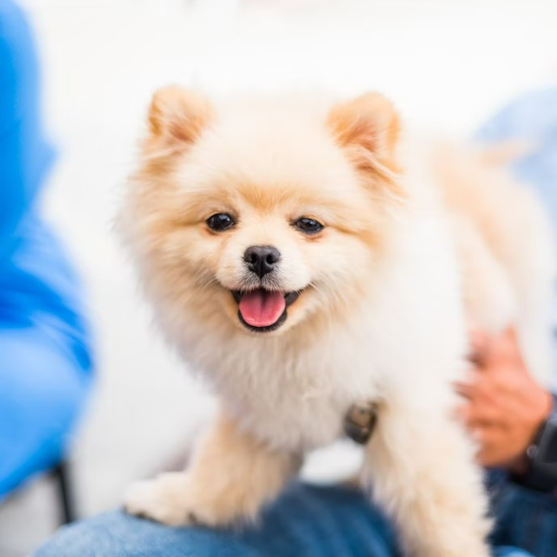
The Pomeranian is one of the most loving dog breeds in the world. These puppies are highly affectionate, charming, and playful dogs that adore their owners beyond measure. The Pomeranian teddy bear puppies adore being part of a family but are also independent dogs. They love to be involved in everything that is going on in the house and are always happy to follow in their owner’s footsteps. Pomeranian puppies are very intelligent and energetic, so they need plenty of stimulation as well as time outside to run around and play.
Characteristics
- Tiny Toy Pomeranians are lively, alert, and responsive to their owners and other dogs
- Toy Poms are a good choice for families with children and seniors as they are very lovable and kind dogs
- The Pomeranian fox, as some people like to call this breed (due to its foxlike face), is also a smart puppy that can be easily trained to perform simple and complex tricks
- Pomeranians are also protective of their family and will bark when necessary to alert to any possible danger or intruder
- It's best to keep the Pomeranian hair tangle-free by brushing them at least once a week or clipping them every few months
- Pomeranian dogs are known for their bravery and lively personality
- Pomeranians have been known to make good watchdogs
- The Pomeranian dog is very affectionate and loving of its owners
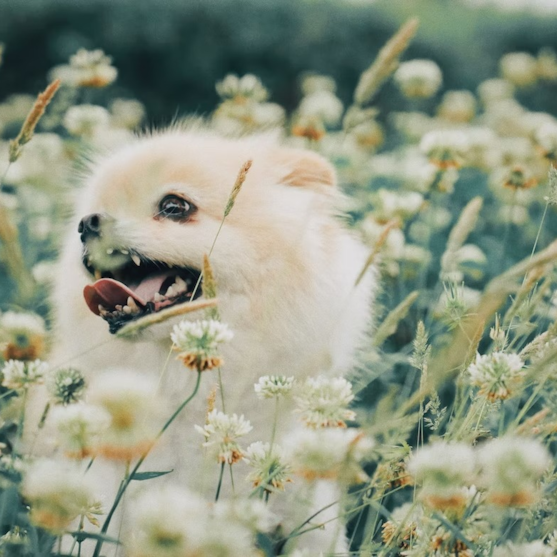
Appearance
The Pomeranian is a very beautiful and elegant dog breed. They have a long, pointed muzzle and medium sized nose with dark, oval-shaped eyes. Their ears are small and pointy. The body of an adult Pomeranian is small but muscular. This makes them one of the most agile dogs in their size category. Their coat is thick and double-layered which makes them naturally cooler in the summer and warmer in the winter.
The Pomeranian size can range from small to toy and even teacup. Typically, a full-grown Pomeranian adult will weigh between 4 and 7 pounds and reach an average height of 8 to 11 inches. The color patterns that Pomeranians have are also very beautiful. They can be solid-colored, or they can have colored patterns and spots. The Pomeranian colors can be shades of red, cream, black, brown, and white.
Photos
Temperament
The Pomeranian teddy bear is a "pocket" sized and joyful pet for any home. He is a playful, loyal, and affectionate companion pet that craves human companionship. Pomeranians adapt well to apartment living with routine exercise.
Pomeranian puppies are very playful and intelligent dogs. They can be trained easily to do tricks, especially when they are younger. They are extroverted and love the company of people. They like to be around their owners as much as possible and will follow them around everywhere.
The Pomeranian dog is a breed that is very sociable, who enjoy being around other dogs of all sizes and ages. These dogs have lots of energy and need daily exercise to remain healthy. Poms tend to bark a lot when in the house, especially when greeting new people or playing with toys. However, they do adapt reasonably well to apartment life once they get used to it. They are an excellent breed for children, seniors, and everyone in between. Their nature is sweet and cuddly, and their temperament is well-balanced.
Care
Pomeranian Grooming
The Pomeranian grooming steps are not very difficult to follow when compared to other breeds.
Pomeranian grooming begins with brushing the coat every day to ensure that you get rid of any loose hairs or tangles. It is also important to keep an eye on the skin beneath the hair. The skin must always be kept clean and dry. If you find that your dog has a skin irritation, you can apply some antibacterial ointment on it with a recommendation from your local vet. The fur should be kept clean at all times and brushed regularly so that it does not get tangled up in knots.
The Pomeranian dogs don’t shed much because they have very fine coats, but they do shed a little bit all year round. Daily 10-minute brushing sessions will help prevent their hair from becoming matted and tangled. Pomeranian grooming also includes bathing your dog regularly. Most Poms require an average of one bath per month; owners should be aware of how frequently they need baths based on their dogs' environment, diet, and lifestyle. Pomeranian dogs should also have their nails trimmed every now and then to avoid damage that can be caused by overgrown nails. Their ears should be cleaned regularly, and their teeth brushed a few times every week.
Pomeranian Exercise Needs
One of the most fun-loving breeds, the Pomeranian’s adorable nature and upbeat personality will provide you with an excellent adventure partner. You will need to take your Pomeranian on long walks every day for up to an hour, because they have a large amount of energy and need ample opportunity to exercise it off. Pomeranian puppies can be taught how to play fetch with humans, which is one of their favorite activities. Providing your Pomeranian pups with toys that encourage activity is also a great way to keep them entertained throughout the day.
Pomeranian Health
With their tiny size, soft fur, and chubby cheeks, Toy and Teacup Pomeranian puppies are nothing short of adorable, but they can also be fragile due to their diminished size. Careful handling of small Pomeranians is required. They can get easily injured during rough play, so it is beneficial to always supervise playdates between children and Pom puppies.
Pomeranian Life Span
The lifespan of the Pomeranian dog is 12 to 16 years. This is a long-lived breed when you consider the average life span of other similar breeds. Like all dogs, Pomeranians need plenty of care and love to thrive and live long, beautiful lives. It is always recommended to provide your puppy with plenty of exercise, high nutrition meals, and a loving environment to grow in.
Pomeranian Training
When training your Pomeranian dog remember that they are a very intelligent dog breed that picks up on commands quickly. Pomeranian puppies respond very well to positive reinforcement, like a treat reward, praise, or a belly rub. Positive reinforcement goes a long way when training Pomeranian puppies because they crave to please their owners. They will generally try their best to learn new tricks and be the best dog they can be.
Before you begin training your Pomeranian puppy, it is recommended to find a low-distraction area where your puppy can only have you to focus on. You can begin training as early as 8 weeks and teach your puppy basic commands first. These include come (recall), sit, and stay. Leash training and socialization should follow suit.
For a more advanced training option, you can start by taking your Pomeranian puppy out of the house more often and practicing commands outside where there are other dogs around. This socialization will help your Pomeranian puppy learn how to behave in front of others while also giving you more opportunities to practice training techniques when there are distractions around.
Training should never involve hitting or yelling at your Pomeranian puppy because despite their big personalities, they are still small and fragile dogs. This will likely cause them to fear you or even become shy. The best way to train a Pomeranian is by using reward-based methods. This means that you need to reward your puppies whenever they do something correctly.
History
Pomeranians are a toy dog breed. The Pomeranian breed is named after the region in Germany called Pomerania, now part of Poland. Some compare Pomeranians to foxes, due to their facial features and tendency to "vacuum clean" or lick their fur.
The Pomeranian is an ancient breed of dog that has its origins in the German Spitz. The dogs were originally bred to hunt and pull small sleds. They are the smallest of the German Spitz breeds. The breed has been known as the Zwergspitz ("dwarf-spitz") in Germany, but this was changed in 1970 by the FCI to Pomeranian. The Pomeranian has also been referred to as a "banana dog" due to its curved tail and back, which is similar to that of a banana; this term is not a standard term and is most often used when referring to Pom puppies.
The Pomeranian's ancestors came from the Arctic regions, ancestors of the Spitz family. This explains the Pomeranian's ability to withstand cold temperatures and its dense, water-repellent double coat. The German word for "spitz" is Pommerscher Spitz or Pommern Spitz which gives us the Pomeranian name. The breed is thought to have originated in northern Germany, Pomerania (Pommern), hence the origin of the breed's name.
The breed was developed in Germany by breeders who wanted a small dog similar in appearance and action to the larger German Shorthaired Pointer. The breed was standardized during the 19th century with help from Queen Victoria of England who is credited with bringing this breed to England.
The Pomeranian dog quickly became a favorite of Queen Victoria of England, who is credited with their popularity in the United Kingdom. At one time, Queen Victoria owned as many as 35 Pomeranian puppies as pets. They were a favorite of hers because of their small size allowing them to live comfortably in her castle. She loved the little dogs so much that she was buried with her Pomeranian, Turi.
The Pomeranian tail is short, it has erect ears and a foxlike face - these are trademarks of the breed and were bred specifically to please the queen. During this time, dog shows were being held in England and Pomeranians were featured as some of the more popular breeds.
In the past decade or so, Pomeranian dogs have yet again seen a rise in their popularity. They are currently one of the most popular dog breeds in Europe, Australia, and the United States. Their popularity is also a reason why Pomeranian dogs have been selected to be part of multiple mixed breeds. The Pomsky, Pomachon, Pomapoo, Aussiepom, and Maltipom, to name a few, are among the most popular Pomeranian mixes.





